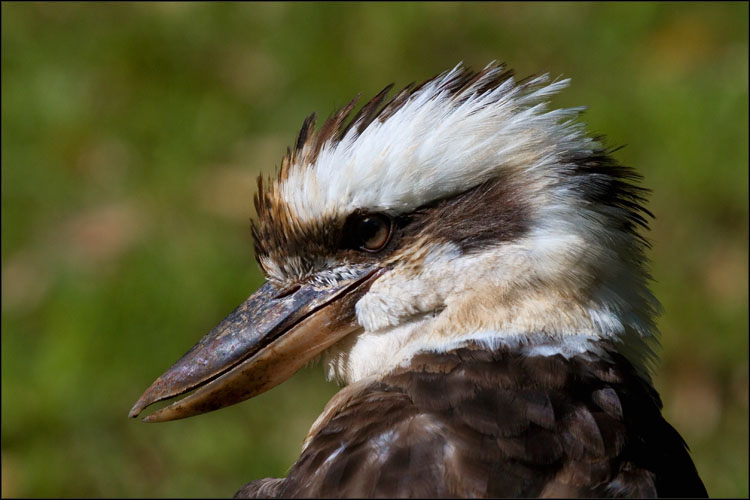Laughing Kookaburra Biography
In easternAustralia Cape York south to Wilsons Promontory. The species’ occurrence in other parts of Australia Tasmania and Western Australia








In eastern
The Laughing Kookaburra is instantly recognisable in both plumage and voice. It is generally off-white below, faintly barred with dark brown, and brown on the back and wings. The tail is more rufous, broadly barred with black. There is a conspicuous dark brown eye-stripe through the face. It is one of the larger members of the kingfisher family.
Identification may only be confused where the Laughing Kookaburra's range overlaps that of the Blue-winged Kookaburra, Dacelo leachii, in eastern Queensland
Laughing Kookaburras are found throughout eastern Australia Tasmania , the extreme south-west of Western Australia , and New Zealand Australia , with some overlap in Queensland
Laughing Kookaburras feed mostly on insects, worms and crustaceans, although small snakes, mammals, frogs and birds may also be eaten. Prey is seized by pouncing from a suitable perch. Small prey is eaten whole, but larger prey is killed by bashing it against the ground or tree branch.
Laughing Kookaburras are believed to pair for life. The nest is a bare chamber in a naturally occurring tree hollow or in a burrow excavated in an arboreal (tree-dwelling) termite mound. Both sexes share the incubation duties and both care for the young. Other Laughing Kookaburras, usually offspring of the previous one to two years, act as 'helpers' during the breeding season. Every bird in the group shares all parenting duties.
Laughing Kookaburra

Laughing Kookaburra

Laughing Kookaburra

Laughing Kookaburra

Laughing Kookaburra
Laughing Kookaburra

Laughing Kookaburra

Laughing Kookaburra

Laughing Kookaburra
Laughing Kookaburras sit on fence
Laughing Kookaburra-Sacramento zoo
No comments:
Post a Comment